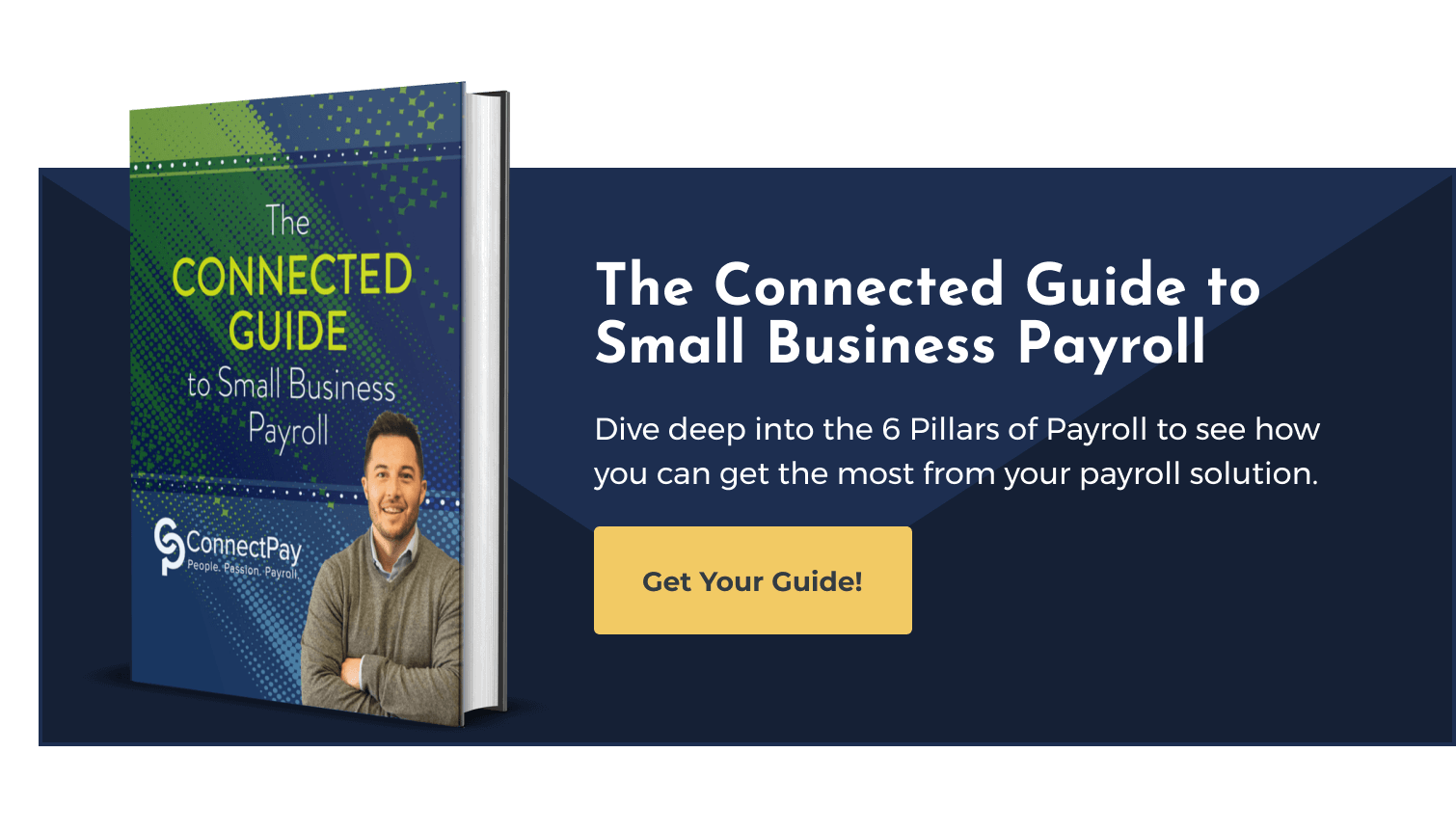How To Run Payroll Manually: Step-by-Step Guide for Small Businesses

We get it: Your small business is your baby. It’s hard to let go and let someone else take the reins of any part of it.
This is especially true when it comes to finances. Your business is your livelihood, and your employees are the engine that runs your business. They trust you to pay them correctly, and on time.
If you don’t, you might lose their trust, and they might feel compelled to leave. This is why running payroll efficiently is essential. But can you do it alone? If you do decide to figure out how to run payroll manually, we’re here to help.
In this article, we’ll outline the exact process you can follow to run payroll manually. From understanding why and when manual payroll might be the right choice for your business, to employee onboarding, understanding payroll taxes, calculating payroll, reducing errors, and much more.
A Step-by-Step Guide: How To Run Payroll Manually
We touched on it in the previous section, but it’s worth stating again: getting payroll wrong could be disastrous for your business. Building trust takes time, but one slip-up can break it. In fact, forty-nine percent of employees will start looking for a new job after experiencing only two problems with their paycheck.
Going the manual route has its risks. But you might want full control over the payroll process, and learning how to run payroll manually gives you that control.
You could take a DIY approach, calculating each paycheck, deducting taxes, filing forms, and distributing payments yourself. Similarly, you might invest in payroll software that automates some processes like tax calculations (you still have to handle tax payments yourself). Your other option is to use an automated payroll provider. These services calculate payroll, pay taxes, file returns on your behalf, and integrate with accounting software.
When you’re just starting out, and cash flow is tight, running payroll manually is an attractive starting point. Payroll seems manageable when your team is small, and you don’t have to rely on an outside provider — you retain full control over the process.
Why Choose Manual Payroll?
Before deciding whether to run payroll manually, you need to weigh the pros and cons.
Pros
- Full control of the process: With manual payroll, you have complete ownership over the entire process without relying on a third-party provider. You decide how to calculate, distribute, and report payroll based on your business' needs.
- Cost savings: Some payroll providers charge monthly fees plus per-employee costs. Taking care of payroll yourself can save a bootstrapped startup or cash-strapped small business a lot of money.
- Simplicity: With only one or two employees, manual payroll using spreadsheets or accounting software might do the trick.
Cons
- Time-consuming: Processing payroll takes significantly longer than using software or outsourcing to a payroll provider, especially as your team grows.
- Risk of error: Homegrown payroll solutions have an error rate of 11.4 percent vs. third-party payroll solutions of 6.1 percent. Mistakes in payroll or tax calculations can lead to fines and penalties.
- Neglecting other areas: With a hyperfocus on payroll, you might miss other important HR deadlines like labor law posting requirements. You could also drop the ball managing employees and building company culture.
-
Staying current is hard: Payroll tax laws change regularly. With manual payroll, the burden falls entirely on you to stay up-to-date to avoid missteps.
Still, the manual approach can work well if:
- You have a small employee count.
- Your payroll structure is simple — employees all work the same hours or have uncomplicated tax situations.
- You’re just starting out and funds are tight.
Step #1: Getting Started With Payroll
The first step, if you haven’t done so already, is to register your business. You’ll need to register your legal business structure, like an LLC or corporation, based on your state’s requirements. Then you need to apply for an Employer Identification Number (EIN) from the IRS. This unique ID number identifies your business for tax purposes; you need it to report payroll taxes.
Every state has its own registration and compliance requirements related to payroll and business operations. Common requirements include registering for state payroll taxes, workers' compensation insurance, and new hire reporting.
Next, determine your payroll schedule. The most common payroll frequency is bi-weekly — it’s easy to administer for all employees, including hourly employees — but it depends on your business. You’ll also need to factor in state laws.
Finally, choose an accounting method. With the cash method, income is recorded when it’s received, and expenses are recorded when they’re paid — when cash changes hands. The accrual method is more complex. It’s best to speak to an accountant to determine what's best for your business. ConnectPay's Connected Network can refer you to trusted local CPAs and bookkeepers.
Step #2: Employee Onboarding and Payroll
For each new employee, you’ll need to collect tax information and set up their pay details.
- Collect tax information: Employees need to fill out the federal form W-4 as well as state equivalents. This provides their tax withholding information. Also collect documents like I-9, direct deposit forms, and any garnishment or child support paperwork if applicable.
- Classify employees: Establish your employees as a W-2 wage earner or 1099 contractor. Up to thirty percent of businesses misclassify employees as independent contractors, and this can lead to retroactive tax payments and compliance penalties.
- Set up compensation: Enter employee pay rates and schedules into your system or spreadsheet. For salaried staff, calculate their per-pay-period earnings. For hourly employees, you may need to track hours worked each period. Set default deductions for taxes, 401k contributions, health premiums, and more.
Related: 1099 vs W2: 4 Tips for Classifying Workers Correctly
A thorough onboarding process helps ensure you have the complete data you need to calculate each employee’s earnings and withholdings every pay period. Keeping organized records from the start makes ongoing payroll processing easier.
Step #3: Understanding Payroll Taxes
With payroll taxes making up a considerable portion of gross pay, getting it right for your employees is essential. When running payroll, you’re responsible for properly calculating, deducting, and remitting these taxes. Here are the main categories:
Federal Payroll Taxes
FICA, or Social Security and Medicare taxes, fund the social security program. Collected taxes fund the retirement, disability, and survivorship benefits millions of Americans receive each year. FICA taxes are split between employer and employee.
As of 2023, Social Security tax rates are 6.2% for the employer and 6.2% for the employee. You withhold this tax and forward it to the government. You’ll need to use Form 941 to report Social Security tax withheld from employees’ paychecks and to pay their portion of Social Security.
Related: Employment Tax Compliance: 5 Actions You Need to Take Now
Like Social Security tax, Medicare taxes are withheld from employee paychecks. As of 2023, the Medicare tax rates are 1.45 percent for the employer and 1.45 percent for employees.
FUTA, or Federal Unemployment Tax is paid solely by you, and the rate is six percent of the first $7,000 paid to an employee annually.
State and Local Taxes
Most states levy an income tax on employees, which must be withheld and paid. The rate varies widely by state, so ensure you do thorough research. SUTA is the same as Federal Unemployment Tax, but at the state level. Again, you are responsible for this tax, not your employees. The rate depends on state law and your history of unemployment claims.
Finally, some cities or municipalities charge taxes on wages or earnings. If operating in one of these areas, you'll need to withhold and remit local taxes.
Understanding the ins and outs of payroll taxes is vital to accurate payroll. Tax rates and rules change periodically so be sure to stay current. Getting taxes wrong can lead to fines and penalties.
Related: Answered: Which Payroll Taxes are the Employers’ Responsibility?
Step #4: Calculate Payroll
Time for the nitty-gritty calculations. Follow these steps to successfully calculate each employee's earnings and deductions for the pay period:
Step #1: Gather data: For each employee, collect hours worked that pay period along with any overtime, tips, commissions, bonuses, or salary amount if paid a flat rate. You’ll also need any new or updated tax info like Form W-4.
Step #2: Calculate gross pay: For hourly employees, multiply hours worked by their hourly rate. Include any overtime or additional earnings. For salaried staff, divide their annual salary by the number of pay periods to get that period's gross amount. Don't forget to add any bonuses, tips, or other additional pay.
Step #3: Deduct taxes: Next, deduct the federal, state, and local taxes from each employee's gross pay, based on the information on their W-4 form and your local tax laws.
Step #4: Make any other deductions: Deduct any pre-tax benefits like health insurance premiums and 401(k) contributions. Process any court-ordered garnishments.
Step #5: Determine net pay: Gross pay minus deductions equals net take-home pay.
Step #6: Distribute payment: For employees set up on direct deposit, send net pay details to your bank. Print checks for any employee not on direct deposit. Ensure each employee receives a pay stub detailing their earnings, taxes, and deductions for the pay period.
Step #5: Keep Records and Reports
When running payroll manually, it will be up to you to keep detailed, organized records. For each pay period, keep records of employees' hours worked and earnings, tax withholding, deductions, and net pay. Retain these records for at least four years.
The security of your employees’ data is paramount. Keep Forms W-4, I-9, direct deposit info, garnishment orders, and other tax documents in secure personnel files that only authorized payroll staff can access.
If using cloud-based accounting software or spreadsheets for payroll, be sure the provider has strong data security practices like encryption. Finally, when transmitting data like direct deposit info to your bank, use a secure portal and encrypted connection. Never email sensitive data.
In most cases, you'll be required to deposit federal income tax withheld and both the employer and employee Social Security and Medicare taxes. You'll also file employment tax reports quarterly and annually on forms like the 941 and 940, respectively.
How To Run Payroll Manually: Is It the Best Way?
And there you have it! We’ve highlighted the key steps involved in running payroll manually — getting registered, onboarding employees, calculating paychecks, remitting taxes, and keeping records. It’s doable — even preferable — for very small teams. But manual payroll has some clear downsides:
- It’s time-consuming, taking hours each pay period, and gets more complex as your team grows.
- Minor errors and miscalculations can lead to missed payments, IRS penalties, and damaged employee trust.
- It’s almost impossible to stay up to date on changing payroll laws and regulations.
For many small business owners, it makes more sense to outsource payroll to reputable providers.
- You can trust payroll providers to calculate everything automatically for you based on your inputs.
- Payroll taxes and filings are handled by dedicated teams.
- Employees get paid promptly and accurately with direct deposit and digital pay stubs.
- You can spend more time growing your business if you spend less time on payroll.
ConnectPay works with thousands of small businesses, providing hassle-free payroll at competitive rates, tax experts handling filings and payments, seamless onboarding even if you’re switching from another provider, and fast, local support. You’ll never get a voicemail or phone loop during business hours!
Check out our complete Connected Guide to Small Business Payroll to optimize your payroll process today!






